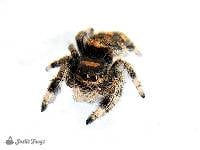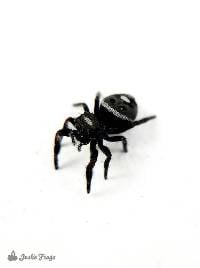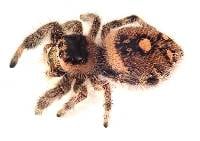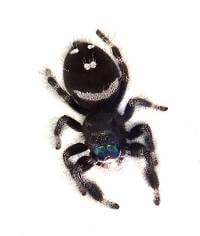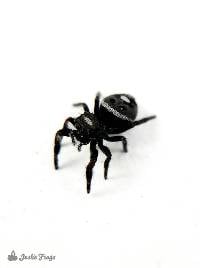Josh's Frogs
Why you should buy from us
Royal Jumping Spider (Phidippus regius) Caresheet
By Ryan Huether
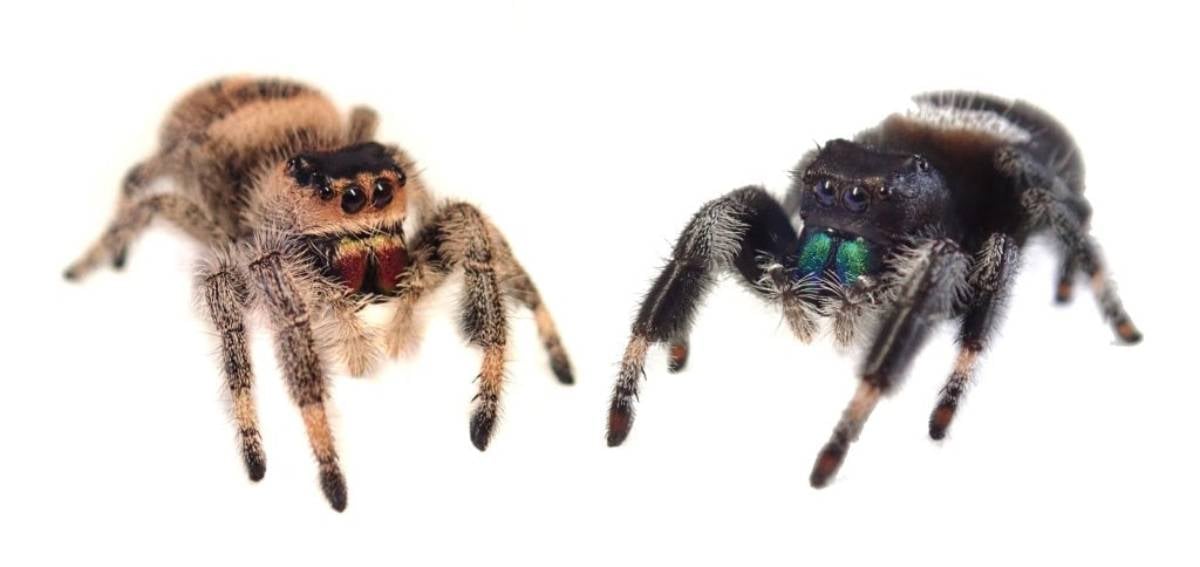 Interesting aspects of the Jumping Spider:
Interesting aspects of the Jumping Spider:
- Uses webbing as a dragline to catch itself in case of an unsuccessful attack.
- Has a nearly 360° field of view.
- Can be tamed and taught to jump from one hand to another.
Name: Phiddipus regius: the name translates to “Phiddipus”, jumper and “regius”, the royal. Thus, its scientific name translates to “the royal jumper”. Its common name is derived pretty much verbatim from its scientific name.
Recommended Enclosure Size:
A small Exo-terra Faunarium will comfortably house this spider. Include a few inches of substrate (potting soil or coco fiber work) and some terrarium furniture (small branches or twigs, plants, etc.). One side of the enclosure should be misted every few days. Josh’s Frogs offers a mister that is ideal for use with small invertebrates.
Temperature (°F): Room temperature is suitable for this species.
Humidity: The Royal Jumping Spider will derive suitable moisture from misting and does not require a specific humidity.
Size: Averages about 12mm in males and 15mm in females.
Age: Jumping spiders are not long lived. Expected lifespan is less than one year.
Feeding: Any sufficiently small feeder insect. Prey items should be no larger than the size of the spider’s abdomen. Remove uneaten prey items: these may endanger the spider during molting. Spiderlings can be fed as frequently as they are willing to eat. Otherwise, they should be fed at least one to three times a week.
Sexing: Royal jumping spiders are sexually dimorphic and have several characters that can be used to distinguish males from females. One of the most obvious tells is the male’s iridescent blue-green chelicerae. In females, the chelicerae are typically covered by their palpi. Females also come in a much greater variety of colors than do males.
Color/Pattern: Males are black with white patterning. The pattern consists of white spots in a triangular arrangement beneath a white band on its abdomen following its connection to the cephalothorax. They also possess enlarged iridescent chelicerae. As a result, it is believed this helps females visually identify males.
On average, females are slightly larger than the males. Colored scales (gray, tan, brown, orange, etc.) are present on females, which can make them easily distinguishable from the males. Females also have iridescence on their chelicerae. However, it is less pronounced and obscured by their palpi, which are densely coated in long white hair.
Social Behavior: This spider should be kept singly.
Breeding: Introduce a mature male and female into a spacious area together. Monitor them closely because females will often make a meal of their mate. The female will produce cocoons containing 50-200 eggs in about 2-3 weeks if copulation is successful. Some large females have been known to lay as many as 570 eggs at one time!
Natural Range: Southeastern United States, especially Florida, as well as the Greater Antilles, and Bahamas.
Links of Interest:
- Arachnoboards: a community of spider enthusiasts that will be able to or have already answered almost any question you can think of with regards to spiders.
Still not sure if a jumping spider from Josh's Frogs is the right pet bug for you? Other species that may interest you include the Arizona desert, Guyana pinktoe, curlyhair, Brazilian blue, pumpkin patch, Trinidad dwarf tiger, or rose hair tarantula.



